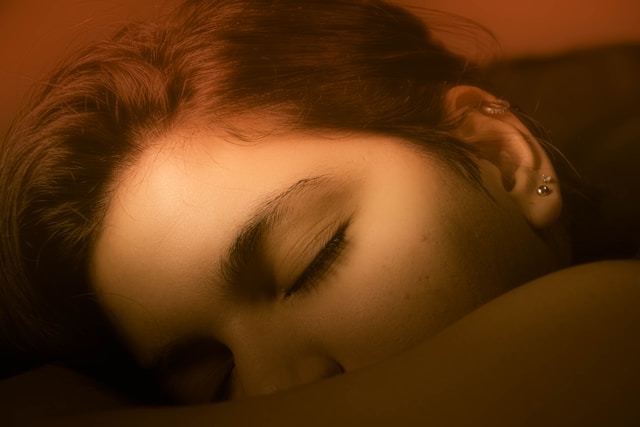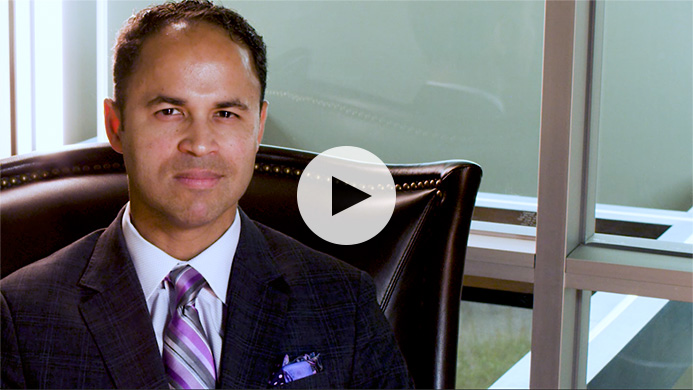
Obstructive sleep apnea (OSA) is a common but serious disorder that disrupts sleep, blocks airflow, and can have severe consequences for heart, brain, and metabolic health. As new medications like GLP-1 and GIP receptor agonists emerge for weight loss and even sleep apnea treatment, patients and providers still seek robust non-medical solutions—especially as a first approach, as adjunct therapy, or when medications aren’t ideal.
Dr. Jose Barrera, an expert in facial and airway physiology, explores the landscape of non-medical (non-pharmaceutical) treatments for obstructive sleep apnea, including the role of GLP/GIP compounds for metabolic management, and why lifestyle and behavioral modifications remain central to healthy, restorative sleep.
Why Non-Medical Treatments Matter
Medical therapies—including CPAP machines, prescription medications, and now GLP-1/GIP compounds—can make a dramatic difference in OSA severity. Yet, many patients prefer to start with less invasive, lower-risk options, especially if they are unable to tolerate certain treatments. Non-medical strategies target the underlying causes of OSA and support the airway naturally—often with immediate improvements in symptoms, energy, and quality of life.
Non-pharmaceutical treatment is especially important for:
- Those with mild to moderate OSA
- Patients who cannot tolerate or who prefer alternatives to medication/CPAP
- Individuals seeking sustainable, lifestyle-oriented solutions
Weight Loss: The Cornerstone of OSA Management
Excess weight, especially around the neck, throat, and abdomen, is one of the greatest risk factors for obstructive sleep apnea. Fat deposits narrow the airway, making it more prone to collapse during sleep.
Losing weight, by any means, can significantly reduce the severity—and in some cases eliminate—OSA symptoms. Behavioral approaches such as eating fewer calories, switching to whole foods, adopting a plant-dominant diet, and engaging in regular exercise (aerobics, resistance, and flexibility) remain foundational. GLP-1 and GIP receptor agonists represent a major advance as medical support for weight loss in OSA, but lifestyle modifications are always the first recommended step.
Specific activities include:
- Choosing high-fiber, lean protein, and low-glycemic foods
- Avoiding sugar and processed carbohydrates
- Maintaining hydration with water over sweetened beverages
- Exercising for at least 30 minutes daily
Sustained weight loss eases the pressure on the upper airway, improves oxygen flow, and can reduce or eliminate the need for CPAP or medical therapy.
Positional Therapy: Simple Changes, Big Impact
For many OSA sufferers, the way you sleep matters. Sleeping on your side or with your head elevated makes airway collapse less likely. Positional therapy involves training and tools to maintain optimal sleep posture.
Techniques include:
- Body pillows or wedges to encourage side sleeping
- Adjustable beds or sleeping surfaces to raise the head and chest
- “Positional trainers”—worn on the back—to prevent rolling onto the back
Research shows that side sleepers and those with elevated heads report fewer symptoms and more restful sleep, particularly with mild to moderate sleep apnea lasting only part of the night.
Oral Appliances: Device-Based Solutions
For those with anatomical problems causing airway blockage, oral appliances—custom-fitted mouthguards or mandibular advancement devices (MADs)—can help. These appliances reposition the jaw or tongue during sleep, keeping the airway clear and reducing snoring and apnea episodes.
- Mandibular Advancement Devices (MADs): Move the lower jaw forward
- Tongue-retaining devices (TRDs): Hold the tongue in place
- Must be fitted by a sleep-trained dentist or medical professional
Benefits include:
- Non-invasive and portable design
- Comfort and ease of use, especially for travelers
- A solution for mild to moderate OSA
Airway Strengthening Exercises: The Power of Practice
Recent research highlights muscle training for airway tone and support. Exercises like singing, playing wind instruments (didgeridoo, oboe, bassoon), and specific mouth/throat workouts can strengthen the pharyngeal muscles.
Key methods:
- Singing exercises: Improve muscle control in the throat
- Playing the didgeridoo: Proven to decrease daytime sleepiness and apnea episodes
- Targeted airway muscle routines: Reduces soft tissue collapse
Practicing these exercises regularly (20+ minutes, 4-5 times per week) may noticeably decrease OSA severity and improve sleep quality.
Lifestyle Modifications: Everyday Choices for Better Sleep
Alcohol and Smoking: Both can worsen OSA. Alcohol relaxes the upper airway muscles, increasing the likelihood of collapse, while smoking causes airway inflammation. Quitting or limiting these habits improves airway health and sleep patterns.
Humidifiers: Dry air can worsen apnea symptoms. Using a humidifier in the bedroom soothes nasal and throat tissues, reduces congestion, and can make breathing easier.
Regular Physical Activity: Exercise not only aids weight loss but improves muscle tone and overall respiratory health. Moderate daily activity is associated with fewer apnea episodes, even if significant weight loss does not occur.
Inspire and Nerve Stimulation: A New Frontier
For those unable to use CPAP who are seeking a non-pharmaceutical but more advanced approach, hypoglossal nerve stimulation (e.g., Inspire device) offers surgical stimulation of key airway muscles. This device senses breathing and stimulates airway muscles to prevent collapse at night.
It is reserved for select patients but underscores the move toward targeted, device-based interventions for persistent OSA.
The Role of GLP-1/GIP Compounds: Metabolic and Inflammatory Management
While GLP-1 and GIP receptor agonists are pharmaceuticals, their mechanism highlights what non-medical strategies strive for: weight loss, metabolic optimization, and reduced inflammation.
GLP-1 (and dual agonists like Tirzepatide):
- Decrease appetite and promote fullness
- Improve insulin sensitivity, lowering blood sugar spikes
- Lower systemic inflammation tied to airway swelling
For those with obesity-driven OSA, a lifestyle and diet approach that mimics GLP/GIP compound effects is essential: nutrient-dense foods, calorie control, anti-inflammatory choices, and regular activity. Even without medication, these foundational habits benefit airway health and decrease OSA symptoms.
In clinical research, GLP-1/GIP compounds have shown significant reductions in the apnea-hypopnea index (AHI)—the gold standard for sleep apnea severity—mainly through substantial, sustained weight loss. Bariatric surgery, while more invasive, has similar impacts.
Integrating Non-Medical and Medical Strategies
Most sleep and metabolic specialists recommend a “stacked approach”—implementing lifestyle changes first, then adding devices or medications as needed, based on severity and anatomy.
A typical pathway strives for:
- Lifestyle optimization: Diet, exercise, sleep hygiene, alcohol/smoking cessation
- Positional therapy and muscle strengthening
- Oral appliances, humidifiers
- Medical therapy—GLP-1/GIP compounds for weight and inflammation management
- Surgical/device-based treatments if necessary
Patients should work closely with sleep medicine specialists, dentists, and, when appropriate, metabolic or bariatric experts to ensure individualized, stepwise care.
Non-Medical Solutions: Success Stories
Real patients often see dramatic improvement when they commit to consistent, realistic lifestyle changes:
- “Switching to side sleeping and losing 10% of my body weight reduced my daytime sleepiness and snoring.”
- “After practicing throat exercises and using an oral appliance, my sleep quality went up so much that I didn’t need CPAP anymore.”
- “Quitting alcohol and walking daily has made me feel more energetic and less groggy in the mornings.”
For many, sustainable improvement comes with support, education, and a team-based clinical approach.
Takeaway: Dr. Barrera’s Guidance for Sustainable, Non-Medical OSA Care
Obstructive sleep apnea can be daunting—but non-medical treatments offer powerful, sustainable relief for many patients, particularly those with mild to moderate disease. These therapies often complement medical advances like GLP-1/GIP compounds, supporting comprehensive metabolic and airway health.
Dr. Jose Barrera specializes in integrating medical and lifestyle solutions—empowering patients to regain control over their sleep and long-term health. Choosing non-medical treatment, whether as a first step or ongoing strategy, is central to a balanced, personalized sleep apnea management plan. Ready for restorative sleep and vibrant health? Start with lifestyle changes, consult with multidisciplinary sleep experts, and consider Dr. Barrera’s advanced and compassionate approach to wellness—where every breath and every night matter.

